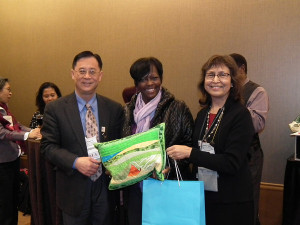I was never any good at science, whether it was dissecting a frog or—God help me—completing a science-fair project. My personal nadir came on a chemistry exam in high school. I like to think my score of eight points out of a possible 100 remains, these many decades later, the worst officially posted number in the history of the school. Which is why, back in 1998, I had mixed feelings about meeting with the author of a soon-to-be-published historical novel about 17th-century scientists.
I had enjoyed Iain Pears’s mysteries about art forgery in Rome, so when his publicist stopped by the Booklist office, with the author in tow, to discuss Pears’s new novel, I was intrigued. But the more I heard about the book, the more my enthusiasm waned. An Instance of the Fingerpost represented a radical departure from Pears’s earlier novels: A 700-page epic, it concerned a visionary band of English scientists who were attempting to take the work of Newton, Galileo, and others to new levels of understanding, but who encountered all sorts of resistance from the church and the government. The book is set in 1660, and the wounds from the Cromwell era are still festering. (I know almost as little about Restoration England as I do about science.) Still, Pears was an amiable chap in person, and he did make clear that, in addition to science, religion, and politics, the book was also about murder. So I thought I’d give it a quick look before assigning the review to someone who had at least scored in double digits on his or her last chemistry exam.
Not only did I read the entire book and write a glowing starred review, but An Instance of the Fingerpost remains one of the handful of books I remember most fondly after more than 30 years at Booklist. In fact, it’s very near the top of a special category in my reading life: books that I stumbled upon, for one serendipitous reason or another, and that won me over with all the peculiar power of an unwanted crush. Adding only a few fictional characters to a cast made up mainly of real-life figures (John Locke and Thomas Boyle, among them), Pears uses the death of Robert Grove, fellow of New College, Oxford, as the linchpin that holds together a sprawling tale of politics and passion, science and sex, religion and revenge. Five narrators, all revealing different degrees of unreliability, present their versions not only of who killed Grove but also of the events surrounding the crime. Amazingly, the novel made me see that science could be the stuff of challenging and thoroughly compelling fiction.
Here’s how I ended my Booklist review: “Come for the history of science, come for the Restoration politics, come for the Dickensian sprawl, but stay for the passion, the human hearts in deadly turmoil.” It was an unlikely thing that I came at all, but I’m very glad I did. Email me your stumbled-upon reading treasures, and I’ll share them in a future column.
BILL OTT is editor and publisher of Booklist. Email him at bott[at]ala.org.


